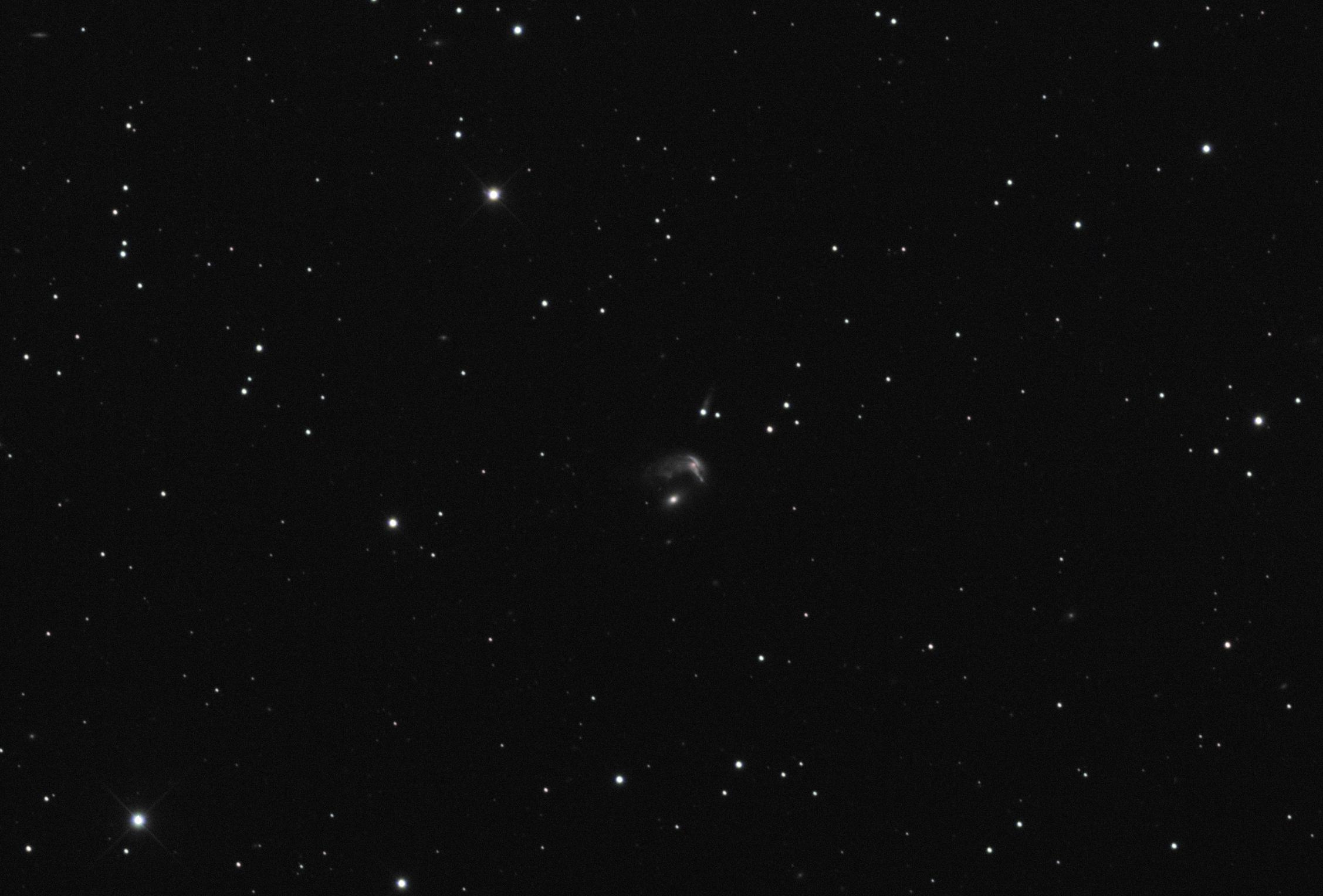This image of distant interacting galaxies, known collectively as Arp 142, bears an uncanny resemblance to a penguin guarding an egg. Data was collected on the evening of February 2, 2022 from the iTelescope T18 12″ CDK telescope located at AstroCamp in Nerpio, Spain shows these dramatic galaxies using 50 minute exposures in Luminance, Red, Green, and Blue filters to produce a color image. More data is probably required to bring out the colors in the galaxies.
From https://www.nasa.gov/image-feature/jpl/pia22092/the-penguin-and-the-egg:
This dramatic pairing shows two galaxies that couldn’t look more different as their mutual gravitational attraction slowly drags them closer together.
The “penguin” part of the pair, NGC 2936, was probably once a relatively normal-looking spiral galaxy flattened like a pancake with smoothly symmetric spiral arms. Rich with newly-formed hot stars, its shape has now been twisted and distorted as it responds to the gravitational tugs of its neighbour.
The “egg” of the pair, NGC 2937, by contrast, is nearly featureless. The distinctly different greenish glow of starlight tells the story of a population of much older stars. The absence of glowing red dust features informs us that it has long since lost its reservoir of gas and dust from which new stars can form. While this galaxy is certainly reacting to the presence of its neighbour, its smooth distribution of stars obscures any obvious distortions of its shape.
Eventually, these two galaxies will merge to form a single object, with their two populations of stars, gas and dust intermingling. This kind of merger was likely a significant step in the history of most large galaxies we see around us in the nearby universe, including our own Milky Way.
At a distance of about 23 million light-years, these two galaxies are roughly 10 times farther away than our nearest major galactic neighbour, the Andromeda galaxy. The blue streak at the top of the image is an unrelated background galaxy that is farther away than Arp 142.
